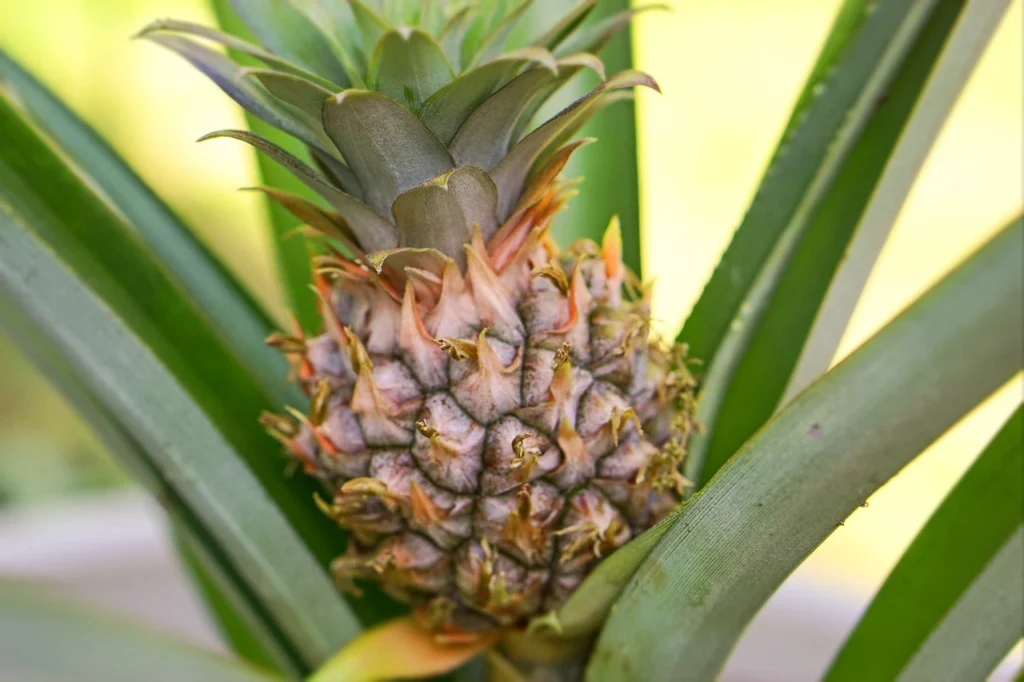Plant Care Expert Guides
Everything You Need to Know About the Sugarloaf Pineapple.
Have you ever bitten into a pineapple and thought, “Wow, that’s a little too tangy for me”? Or maybe you’ve wondered if there’s a pineapple variety that doesn’t leave your tongue stinging? You’re not alone. And luckily, there is a sweeter, smoother answer: the Sugarloaf pineapple.
This unique, low-acid tropical fruit is taking the U.S. by storm, and for good reason. Whether you’re a health-conscious shopper, an at-home gardener, or a foodie searching for your next flavor obsession, this guide will give you everything you need to know about the Sugarloaf pineapple.
What Is Sugarloaf Pineapple?
Sugarloaf pineapple, also known as white pineapple, is a special variety of Ananas comosus that comes from sunny tropical places like Hawaii, the Caribbean, and West Africa. What makes it different? Instead of the usual golden yellow, the inside of a Sugarloaf is pale yellow or creamy white. The best part? Its core is soft and edible—no tough, stringy center like regular pineapples!
The flavor is something special, too. It’s sweet, super juicy, and has a smooth, mild taste without that sharp, acidic bite that can sometimes make your tongue tingle. If you’ve ever felt a pineapple “burn,” this one’s your gentle, friendly upgrade.
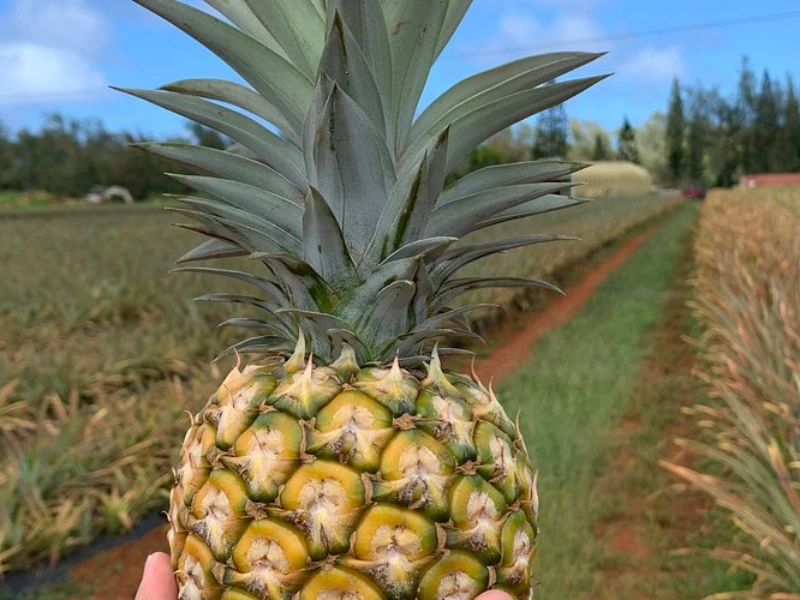
The pineapple plant itself is part of the bromeliad family, which includes lots of colorful tropical plants you might see indoors. But while most bromeliads like to cling to trees, pineapple plants grow low to the ground and love full sun. They’re like little sunbathers, soaking in the warmth.
Pineapples grow from a cluster of stiff, spiky leaves that form a kind of green rosette. After about a year or so, the plant sends up a tall stalk with dozens of tiny purple or red flowers. Each flower becomes a little fruitlet, and together they form the pineapple we all know and love. The top of the pineapple even grows its mini crown of leaves!
Fun fact: in places like Hawaii, hummingbirds aren’t allowed to be imported because they would pollinate the pineapples—making them seedy. Seedless pineapples are the goal, since they taste better and have a smoother texture.
You don’t need seeds to grow new pineapples either. Pineapples are pros at cloning themselves! You can grow them from the leafy top of the fruit, from small shoots called slips that grow near the fruit, or suckers that pop up from the base of the plant.
One of the most loved pineapple varieties is the Kauaʻi Sugarloaf. It’s known for its super soft texture, low acidity, and creamy white flesh that just melts in your mouth. Even the core is delicious—no waste here!
Whether you’re biting into a juicy slice or planting your own at home, Sugarloaf pineapple is a tropical gem that’s sweet, friendly, and full of sunshine.
Nutritional Benefits of Sugarloaf Pineapple
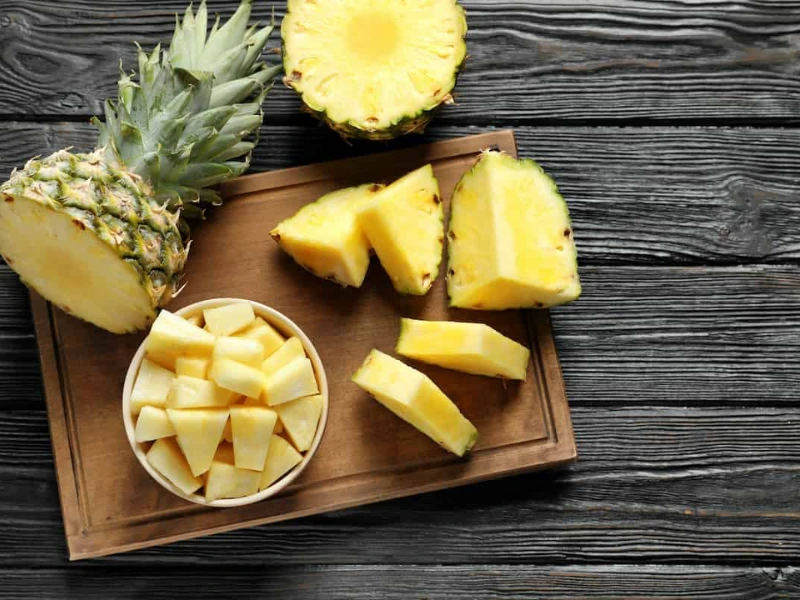
Just because it’s sweet doesn’t mean it’s not good for you. Sugarloaf pineapples are packed with essential nutrients:
-
Vitamin C for immune support
-
Manganese for metabolism and bone health
-
Bromelain, an enzyme known for anti-inflammatory and digestive benefits
-
Antioxidants that help fight cell damage
With fewer acids, it’s also gentler on the stomach, making it a great option for kids or people with acid reflux.
How Does Sugarloaf Taste and How to Use It?
Imagine biting into something so juicy and sweet, that it feels like a natural dessert. That’s what Sugarloaf delivers. It’s less tart than traditional pineapples, so it’s incredibly versatile.
Favorite Ways to Enjoy Sugarloaf Pineapple:
-
Fresh slices as a snack or dessert
-
Grilled with a sprinkle of cinnamon
-
Blended into tropical smoothies
-
Mixed into fruit salads or salsas
-
Added to cocktails like piña coladas
Pro tip: Since the core is soft and edible, there’s zero waste. Just slice and enjoy.
Can You Grow Sugarloaf Pineapple at Home?
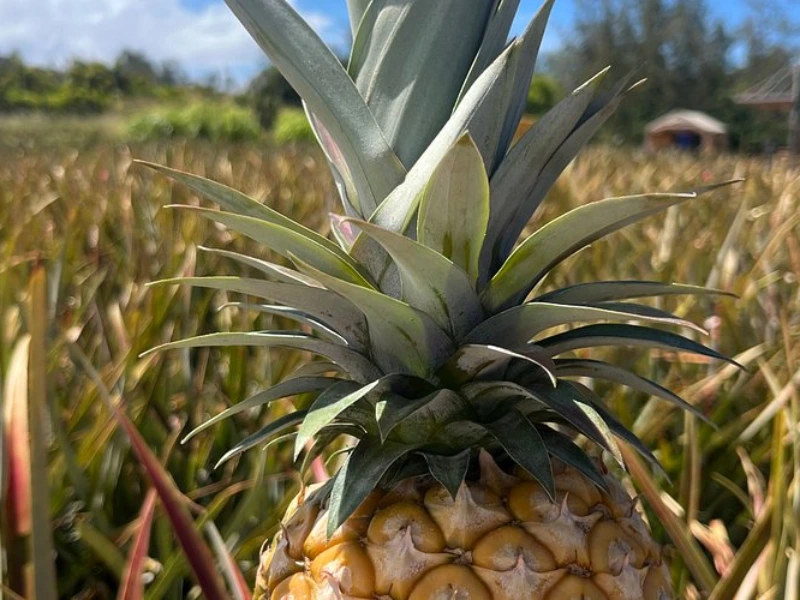
Absolutely — and it’s easier than you might think. Sugarloaf pineapple is an exciting addition to any home garden, especially if you love growing tropical fruit.
Growing Tips:
-
Climate: Sugarloaf thrives in USDA zones 9-11. If you’re not in these zones, consider growing in containers and moving them indoors during the colder months.
-
Soil: Well-draining, sandy, or slightly acidic soil is best. Raised beds or pots with cactus mix work great.
-
Watering: Keep the soil moist but never soggy. Let the top inch dry out between waterings.
-
Sunlight: Needs at least 6-8 hours of full sun each day. If growing indoors, place it by a south-facing window or use a grow light.
-
Fertilizer: Use a balanced organic fertilizer every 6-8 weeks during the growing season. Compost tea or fish emulsion also helps promote fruiting.
Gardener’s Tips:
-
Start from a crown: Simply twist off the top of a Sugarloaf pineapple and let it dry for a day or two. Then plant it directly in the soil.
-
Be patient: It can take 18-24 months to bear fruit, but the payoff is worth it.
-
Watch for pups: After the first fruit, your plant may send out offshoots (called pups) that can be replanted to grow more pineapples.
One gardener in Florida shared how their Sugarloaf plant became the centerpiece of their patio garden, drawing curious neighbors who couldn’t believe the fruit came from their own backyard!
How to Tell When a Sugarloaf Pineapple is Ripe
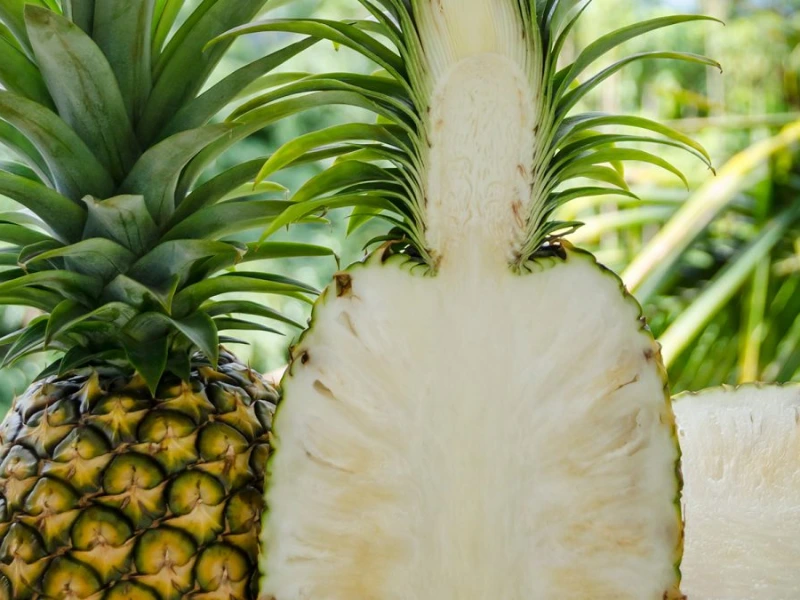
Wondering when your Sugarloaf pineapple is at its juicy, sweet best? Here’s what to look for—no guesswork needed!
Unlike traditional pineapples that turn golden-yellow on the outside, a ripe Kauaʻi Sugarloaf will still look mostly green. Look closely at the “eyes” (those little diamond shapes on the skin). You want to see yellowish dots in the center of each eye, especially around the base of the fruit. The eyes should look slightly puffed or swollen—not flat.
Even though the outside feels firm (sometimes firmer than a regular pineapple), don’t let that fool you. Inside, the Sugarloaf is soft, creamy, and smooth with a sweet flavor and no stringy texture. Plus, the core is tender and totally edible!
Here’s a neat trick: pick up a few pineapples that are the same size. The one that feels the heaviest is likely the ripest and sweetest. That’s because sugar is heavier than water—so a sugar-loaded pineapple will weigh more.
And just so you know, Sugarloaf is one of the sweetest, lowest-acid pineapples out there. It’s all flavor and no burn—truly a tropical treat.
Pineapple Myth Buster:
You might’ve heard that if a leaf pulls out easily from the top, it means the pineapple is ripe. Nope! That’s actually a myth. It doesn’t tell you anything about ripeness—so stick to the weight, color, and scent instead.
Sugarloaf vs. Regular Pineapple: Key Differences
| Feature | Sugarloaf Pineapple | Regular Pineapple |
|---|---|---|
| Taste | Sweet, mild | Sweet-tart, acidic |
| Flesh Color | Pale yellow or white | Deep yellow |
| Core | Edible and soft | Tough and discarded |
| Acidity | Low | High |
| Texture | Juicy and tender | Fibrous and firm |
For those with sensitive stomachs or just a preference for smoother flavors, Sugarloaf wins hands-down.
FAQs About Sugarloaf Pineapple
1. How is Sugarloaf different from a regular pineapple?
Sugarloaf pineapple stands out in a few sweet ways. First, it’s much less acidic than the standard yellow varieties, so it won’t leave your tongue tingling or your mouth puckering. It’s also noticeably sweeter and milder in flavor—like nature’s version of candy. Another big difference? The flesh is white or pale yellow instead of the usual golden color, and even the core is soft and totally edible. That means you can enjoy every single bite without having to carve around a tough center.
2. Is Sugarloaf Pineapple GMO?
Nope! Sugarloaf is not genetically modified. It’s a naturally occurring cultivar of Ananas comosus that’s been grown and enjoyed for generations in tropical regions. It’s all-natural sweetness, straight from the sun and soil—no science lab involved.
3. Can I grow it in a non-tropical climate?
Absolutely! Even if you don’t live in a warm, tropical place, you can still grow Sugarloaf pineapples. They do well in containers, so you can keep them indoors near a sunny window or move them outside during the warm summer months. Just be sure to bring them in when temperatures drop—these tropical beauties don’t like the cold.
4. How do I know if it’s ripe?
Sugarloaf pineapples don’t always change color like the yellow ones do, so don’t wait for a bright golden hue. Instead, go by smell and feel. When it gives off a sweet, fragrant aroma and the skin feels just a little soft to the touch, it’s ripe and ready to eat. Trust your nose—it’s the best pineapple detector out there!
Final Thoughts
Sugarloaf pineapple is more than just a trendy fruit — it’s a low-acid, nutrient-rich, insanely delicious tropical treat. Whether you’re looking to switch up your fruit game, eat healthier, or grow something unique at home, this exotic pineapple variety checks all the boxes.
So, next time you’re shopping for produce or ordering fruit online, give Sugarloaf a try. You might never go back to regular pineapple again.
And if you’re a home gardener looking for a fun and rewarding challenge, Sugarloaf pineapple could be the crown jewel of your backyard or container garden.
Have you tried growing Sugarloaf pineapple yet — or are you planning to give it a go this season? I’d love to hear how it’s going and what surprises you’ve had along the way! If you’re dreaming up your 2025 garden, check out the Easy Plant Finder — it helps match you with plants that suit your space and conditions.
Stay sweet — and happy snacking!

